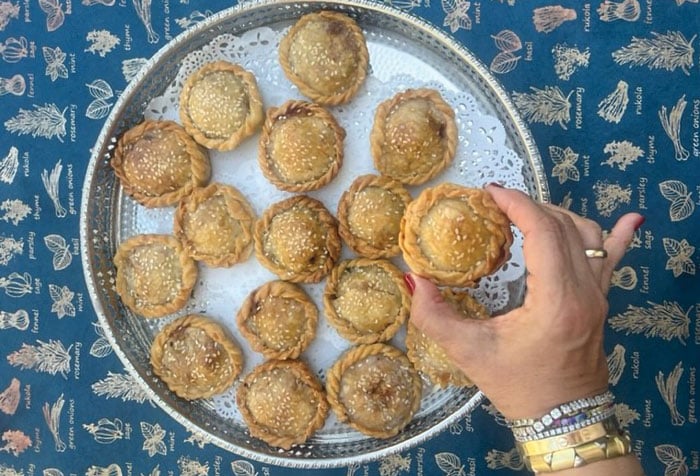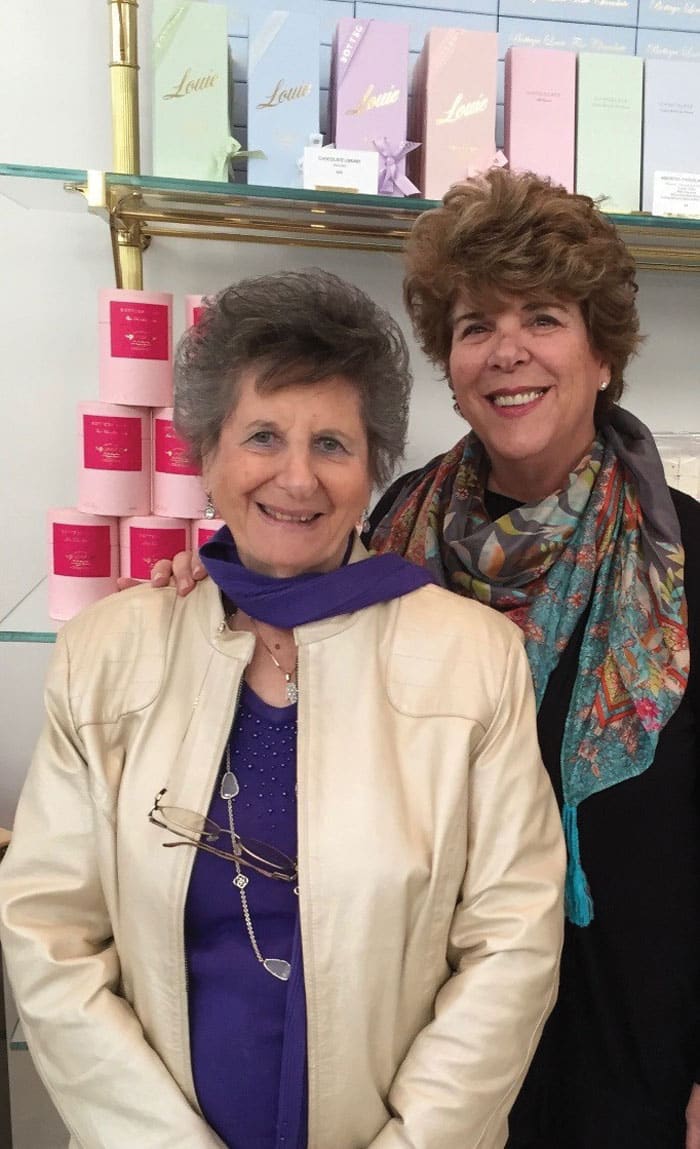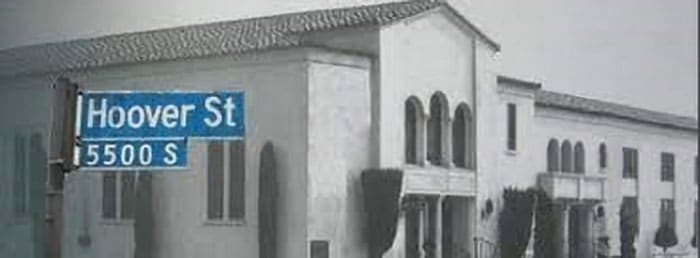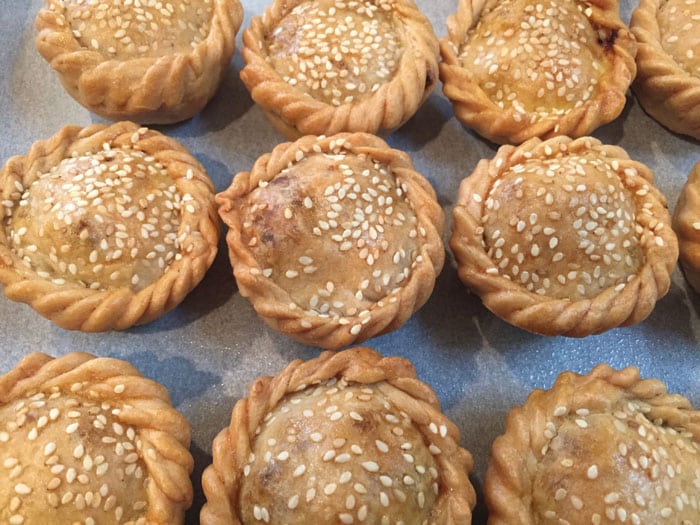Tomorrow night marks the beginning of the Jewish New Year.
I love new beginnings.
A time to start anew.
To look to the year ahead and envision and create who we will be, how we will build on and improve the way we are, how we interact, how we listen, support and love.
How we can make our world, our town, our community and our family better.
How we can love …. Bottom line, it is what really matters.
Open our hearts, our souls….listen to one another. HEAR each other. That’s the basis of love.
To serve, to be there for each other. Making the world a better place.
Passing the mirror and noticing the frame.
Looking beyond.
May the year ahead bring each of us good health, healing of body, heart and soul. May we be blessed to grow in our connection to HaShem.
May we be blessed to grow in our true connections with each other.
May it be a year of success, of family blessings, moments of meaning and moments of making a difference.
May we find the calm within to help build the calm in our world.
May we nurture the love within to help bring more love to the world.
May we take the time, make the time, to notice the daily miracles in life, and may we find the time to show and give gratitude to Hashem, who makes it all possible.
May we be better today than we were yesterday. And may we open our hearts and minds to be even more tomorrow.
May we realize that we all have so much more in common and so much more love to share than we once thought possible.
Tizku LeShanim Rabot Tovot V’ne’imot.
May we each merit many good and pleasant years. Tizku ve tehiye ve taarikh yamim. May we merit and live and may our days be lengthened.
Amen
~Marcia

Precious Pastelikos
There are only a few ladies left in Los Angeles that know how to make these treats that date back to medieval times. I decided the time had arrived for me to master the pasteliko!
by Sharon Gomperts and Rachel Emquies Sheff
August 31, 2023
 Photo by Shevy Gomperts
Photo by Shevy Gomperts
Rhodes is a tiny island in the middle of the Aegean Sea. Captured from Greece by the Ottoman Turks, it provided a safe haven for the Jews of Spain. They escaped the Inquisition with their faith and traditions, their Ladino language (Judeo-Spanish) and their beloved recipes. In the early years of the 20th century, many young Rodeslis left in search of opportunity. They established communities in Seattle, Atlanta, New York and Los Angeles.
When I met my husband Neil in the early 1990’s, I was introduced to some pillars of the Los Angeles Rodesli community. They welcomed me into their hearts and homes, and especially into their delicious kitchens.
Over the years, my mother-in-law taught me how to bake many of their unique delicacies, including burekas, boyos, biscochos, reshas, rojaldes and frijaldados. But there was one little gem of the baking repertoire that I never felt confident enough to learn — pasteliko (little pies). They are a small round savory pastry filled with ground meat or eggplant. Quite time intensive to make, but so worth the effort. Becky, my mother-in-law, used to lovingly craft them for us, but then her hands became arthritic and she was no longer able.
Recently, Neil was reminiscing about this favorite treat. He told me that before his mother learned to bake them, the old ladies of the community loved to spoil him with a steady supply. There are only a few ladies left in Los Angeles that know how to make these treats that date back to medieval times. I decided the time had arrived for me to master the pasteliko!
I emailed our dear friend Marcia Israel Weingarten and asked her if she thought her lovely mother Kaye would consider teaching me. Marcia writes the amazing food blog, “Bendichas Manos” (Ladino for “blessed hands”). She runs a popular Facebook group by the same name filled with her mother’s recipes and videos keeping the old memories alive. I was so honored when Marcia invited me over one morning to learn how to make these savory treats with her mother Kaye Israel.

Photo courtesy Marcia Israel Weingarten
Kaye’s parents, Hacco and Sarota Hasson, were born, raised and married on the Island of Rhodes, when it was still part of the Ottoman Empire. In 1909, they arrived in Seattle, Washington, a magnet for the Ladino-speaking Jews of Rhodes and Turkey. Kaye was born there, the youngest of five children. They lived in the Yesler Way neighborhood, surrounded by many other families from Rhodes. Her father was a shoeshine man who worked in the Pioneer Square District in Downtown Seattle. He built them a home and eventually bought the property next door where he built a second home, all on a shoe shining income! They lived up the hill from the Rodesli synagogue and on Saturday mornings, friends would pass by after Shabbat services. Her mother would always invite them in for “Desayuno” (traditional cheese-and-spinach filled breakfast pastries, fritatas, cheeses, brown hard-boiled eggs and more).
In 1929, when Kaye was only five, her eldest sister was engaged to a man from Los Angeles. The family decided they should all move together and they settled on 52nd Street and Hoover, near the Coliseum. This was the center of Rodesli Sephardic life in Los Angeles and cousins, second cousins, in-laws, aunts and uncles all lived close together.
On Shabbat afternoons they would go to Kaye’s aunt tia Rosha Solam for a vijita (visit). The ladies would sit and drink caveh (coffee) and snack on pipitas (roasted pumpkin seeds), sweets and fresh fruits. Homemade dulse (sweet preserves) were passed around and the spoonful of sweetness would be washed down with a glass of water. In the late afternoon, the table would be set with either pastellikos or boyos and burekas.
This tradition carried into the 1960’s, when the community lived in Liemert Park and Crenshaw Village. As a child Neil remembers tagging along with his grandparents to the home of La Ermana Miriam, the mother of his “aunt” Sylvia. Almost every home on that block of Dublin Avenue belonged to a Sephardic Rodesli or Turkish family. The first building of the Sephardic Hebrew Center was located nearby at 55th and Hoover. The Sephardic Temple Tifereth Israel (now on Wilshire Boulevard in Westwood) was just around the corner on Santa Barbara Avenue (now MLK Boulevard).

Kaye recalls that growing up, especially during the Great Depression, meat was not a staple. On Friday nights, they would eat chicken in honor of Shabbat. Weeknight dinners consisted of vegetables sometimes cooked with a small piece of lamb, just to add flavor. Beans were flavored with marrow bones and there was always Sephardic red rice, cooked with tomato sauce. Food was never wasted. When her mother peeled zucchini for a dish, the peels were saved and chopped up with garlic, lemon and oil and served as a tapenade.
While Kaye learned to cook primarily from her mother, when her mother passed away, Kaye would spend many days baking with her aunt Boule Benveniste. Boule taught her that “first you taste with your eyes” and that it was paramount to create uniform and eye pleasing items when baking. She would spend hours in the kitchen, listening to her aunt tell stories about life in Rhodes. That is how the family stories have been passed on, sharing tales one generation to the next.
Soon after receiving the invitation from Marcia, I took a day off work and headed out to Tarzana. Along my drive, I reminisced about her father and Kaye’s husband Jack Israel, who had a wonderful sense of humor and a special “down to earth” kindness. He was president of the Sephardic Hebrew Center (where Neil became the youngest board member). Jack was a very smart, talented and eloquent writer who became the first editor of the SEC’s Hamerkaz Newsletter. He was LA’s first “Sephardic blogger,” only he used pen and paper! He was so good to all us young adults in the early days of the Sephardic Educational Center.
As soon as I walked in to Kaye’s home, I felt so welcome. The dough was already prepared. “I know that you know how to make this dough. It is the same as the bureka dough your mother-in-law Becky makes,” Kaye told me. So we immediately started with the conduchu, a meat filling which consists of ground beef, onions, parsley (some cooks add cut up brown hard boiled eggs). We went to the dining room table, where there were three boards and trays of dough. Kaye and Marcia had already formed the dough into apricot size balls (for the cups) and smaller walnut size balls (for the hats).
Kaye patiently showed me over and over how to shape the dough. “Okay, go ahead,” she said. I didn’t expect to be thrown in the deep end so quickly! I usually pick up cooking skills pretty quickly, but this was truly challenging. Kaye was very patient and kind, as she tried to guide my hands in this unfamiliar task. Marcia, who has been in the kitchen with her mother all her life, gave me a few tips.
I kind of got the hang of forming the little cups, filling them with the meat, then taking the smaller dough pieces, dipping them into the sesame seeds and then closing up the cups. But then came the excruciatingly tough part—crimping the edges of the “hat”. There’s a video of Kaye on Facebook showing how to crimp the dough. I’ve probably watched it one hundred times. I have never been able to get it right. We finished up all the meat filling and we put all the pastelikos into the hot oven.
We shared a lovely lunch featuring these delicious freshly baked meat pies. I heard Kaye’s amazing stories about growing up in Los Angeles’ Sephardic community.
We shared a lovely lunch featuring these delicious freshly baked meat pies. I heard Kaye’s amazing stories about growing up in Los Angeles’ Sephardic community.
Before I left, Kaye filled up a shopping bag full of pastelikos for Neil (fondly called Pasha by Marcia). She gave me another bag filled with her famous, incredibly perfect biskochos (crown shaped cinnamon cookies). She gave me all the leftover dough balls in a Tupperware and told me to use it to practice my crimping. And that night that’s what I did. To my shock and surprise, I was actually able to crimp. And it was a rather decent pretty crimp!
Neil came home from work and must have eaten at least five pastelikos while standing in the kitchen. All he could say with every bite, was “mmmmmm!”
-Rachel

Kaye Israel’s Pastelikos Recipe
2 onions, peeled and diced
2 lb ground beef
5 tsp tomato sauce
a dash of cayenne pepper (or pepper
flakes) and garlic powder
Salt & Pepper to taste
1/4 cup rice
1 egg
1/2 cup chopped parsley
¼ cup water
1. Parboil rice. To do so, bring 3/4 cup water to a boil. Add 1/4 cup rinsed rice. Cook covered on stove approximately 10 minutes on low/simmer heat. Rice should be only partially cooked.
2. In a large skillet (or electric frying pan) sauté diced onions, using 3 -4 tablespoons of oil.
3. Add ground beef and brown.
4. Add tomato sauce and spices, Add parboiled rice, followed by chopped parsley. Add water to mixture. Cover and cook on medium heat until all water is absorbed, approximately 35-40 minutes. Add egg to mixture to bind.
While cooking, begin making dough.
Dough
(for pastelikos and burekas)
3 cup ice water
2 1/2 cup oil
1 tsp salt
10 – 12 cups flour
1 cup sesame seeds
1. Put ice in measuring cup and ice water to 3 cups
2. Add oil and salt.
3. Incorporate flour into dough as you add it. (Ice cubes will melt and/or will “pop up” and you will remove as dough is mixed.)
4. Once dough is ready, prepare balls the size of an apricot for the “cup”, and a ball the size of a walnut for the “hat.”
5. Place an apricot-sized ball in the palm of your hand. Use the thumb on your other to form the cup. Fill with conduchu. Then, take a walnut sized ball, dip it in a bowl of sesame seeds, then flatten. Place on top of the filled “cup” (sesame seed side facing out).
6. Crimp close the edges. Place in a mini cupcake tin. (helps pastelikos keep their shape).
7. Brush with an egg wash (beat an egg with a few drops of water).
8. Place on lower shelf in 350°F oven.
9. Bake until bottoms begins to turn color (golden), about 20-25 minutes. (This will depend on your particular oven. Keep an eye on them.)
10. Move to top shelf until tops are a gold color.
Pastelikos are delicious right out of the oven! (after a few minutes of cooling). They freeze well. Pack in airtight freezer bags or boxes. To enjoy from the freezer, defrost and reheat at 350 degrees in the oven.
Sharon Gomperts and Rachel Emquies Sheff have been friends since high school. The Sephardic Spice Girls project has grown from their collaboration on events for the Sephardic Educational Center in Jerusalem. Follow them
on Instagram @sephardicspicegirls and on Facebook at Sephardic Spice SEC Food. Website sephardicspicegirls.com/full-recipes.

A SEPHARDIC ROSH HASHANAH CEREMONY COMBINES ELEMENTS OF TASHLICH AND A HEALING RITUAL.
From Marcia Weingarten

Next Sunday our family will gather at Venice Beach for our yearly ‘Lavar La Cara,’ (literally ‘wash the face) at the ocean. Our tradition combines elements of ‘Tashlich’ from the Hebrew “to cast off,” referring to the custom of tossing bits of bread in the water to symbolize the casting off of our sins. The second element is a healing ritual of the Rhodeslis — those who trace roots to the island of Rhodes, tossing ailments, fears, concerns into the ocean and receiving renewed health and blessings from HaShem along with the blessings and love from our elders.
Over the generations, our family tradition had been to go to the beach on the first day of Rosh Hashanah. Now that we live in disparate parts of Los Angeles, have differing synagogue schedules and levels of observance, our extended families (about 40+ of us, spanning five generations – Mashala) come from throughout the greater Los Angeles area and meet at Venice Beach on the Sunday morning between Rosh Hashanah and Yom Kippur, bringing our beach chairs and enjoying some time together after our ritual by the shore. It truly has become one of the most treasured traditions of all generations.
Once we set ourselves up, we go down to the water, usually in smaller family groups. A family matriarch, one by one, blesses us and washes our faces. Bending down to capture a handful of water from a new wave, she washes the face of each of us, saying in Ladino, “todo mal ki se vaiga” (“everything bad should go”). She elaborates: “Everything that is bothering you, worrying you, anything that is harming you, any sickness, illness, any fright or discomfort, all this, should be swept away to the very depths of the ocean.” She then bends down to scoop a fresh handful of water from a new wave. Washing our face and the back of our neck again, this time saying “todo bien ki se venga” (“everything good should come”). Again, she elaborates, “Everything now will be good, your pain will go away, any illness will leave your body, healing will come to you. Every worry is now gone. New ideas and good thoughts will fill your mind. Your heart will be content.”
To each, now, she gives a specialized blessings for the New Year. To children she might offer that they will do well in school, be happy, have good friends, make their parents proud or have a good year in sports, theater, Hebrew school; whatever is appropriate to that child. To the young adults, she might offer that they find a good jobs or career and that they find the right person to share their lives with. Newlyweds are blessed to be happy, build a Jewish home and life together, have children, build a life of meaning and keep our traditions. After the individual blessings, the matriarch gives each of us a finger full of sugar, which she puts in our mouths for a “sweet” year. (Traditionally the sugar is from the Rosh Hashanah table. After we use sugar for our Hamotzi prayer on this holiday, the remaining sugar goes into a baggie and comes with us to the beach.)
There are variations. Sometimes we invoke the names of the Patriarchs, “Con el hombre del Dio di Avram, Izhak, Yaacov, Rey David i Shelomo,” as well as the Matriarchs, “Rivka, Sarah, Rachel, i Leah.”
On occasion we add a new tradition, like dancing along the shore. New traditions are always welcome!
Blessings complete, we return to our beach chairs, sit for a nice ‘vijita’ (visit) and enjoy coffee, juice, bagels, borekas (Sephardic cheese and rice or potato pastries), biscochos (tea cookies), spinach quashado (soufflé), assorted cheeses with olive oil (usually feta and ricotta), homemade breads (rosca), fruits and dessert pastries. We stay and visit, feeling renewed, and certainly feeling a great deal of love from and for our family. It’s a New Year. The Day of Atonement is coming soon. We are ready to face it with a humble heart, renewed spirit and a refreshed outlook.
Revised and based on an article originally published here: https://www.myjewishlearning.com/jewish-and/a-family-ritual-for-blessing-the-new-year/

